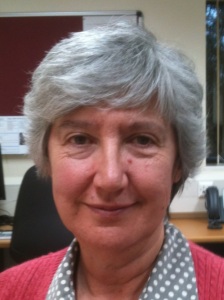 I recently received a routine breast screening invitation, and found myself weighing up the risks and benefits of attending. The accompanying leaflet “Helping you to decide” (pictured) says;” About 12,000 women in the UK dies of breast cancer every year. Survival from the disease has been improving over time, and now about 3 out of 4 women diagnosed with breast cancer are alive 10 years later.” Key advances include treatment and preventive strategies, including screening. Surely to be part of this good news story I must book my appointment?
I recently received a routine breast screening invitation, and found myself weighing up the risks and benefits of attending. The accompanying leaflet “Helping you to decide” (pictured) says;” About 12,000 women in the UK dies of breast cancer every year. Survival from the disease has been improving over time, and now about 3 out of 4 women diagnosed with breast cancer are alive 10 years later.” Key advances include treatment and preventive strategies, including screening. Surely to be part of this good news story I must book my appointment?
Screening aims to identify apparently healthy people who may be at risk of disease, where treatment is more effective if applied earlier. The UK National Screening Committee reviews emerging evidence and applies criteria to weigh population benefits against harms. They recommend systematic population screening by mammography (breast imaging) to prevent breast cancer deaths.
The evidence they review comes from many disciplines; epidemiology, biology, and radiology, statistics and the social sciences.
Large epidemiological studies of breast cancer among carefully characterised women over time (cohort studies), and trials of treatment, tell us about the natural history, enable estimates of likely cost-effectiveness of treatments and monitor performance of breast screening programmes in preventing disease progression and early death.
 What might be expected to happen to 200 women who either do or do not attend breast screening every three years between ages 50 and 70, and then are followed up until aged 80. Graphic by Mike Pearson, from information in NHS Screening leaflet.
What might be expected to happen to 200 women who either do or do not attend breast screening every three years between ages 50 and 70, and then are followed up until aged 80. Graphic by Mike Pearson, from information in NHS Screening leaflet.
Recently statistitians and social scientists have begun to turn these estimates into quantitative, pictograms accessible to the women deciding whether to attend or not. They pay attention separately to benefits and harms of attending and of not attending screening. These analyses show the extent to which screening is identifying, as cases for treatment, women who would remain well if they did not attend for screening. The pictogram shows that 15 of every 200 women are expected to get breast cancer over 20 years; If screened and treated 3 would be expected to die early from breast cancer. If not screened, 4 would be expected to die early from breast cancer. But the pictogram also shows that for each life “saved” thee women are estimated to be labelled as having cancer and treated unnecessarily. This over treatment seems to be due to limitations in predicting which lesions found will progress without treatment. Breast cancer can be divided into myriad different diseases with genetic and epigenetic variations. More work is needed to identify these, and how they will progress, building on recent discoveries of subgroups of women at high genetic risk of cancer or cancers responsive to particular treatments.
Women scientists have led many of these advances. Perhaps you too may be excited by the possibility of work in this area; maybe you will help to identify biomarkers distinguishing breast lesions that will or will not progress, or better treatments of later cases so that breast screening can be reserved for high risk groups of women or stopped altogether. Maybe you will be interested in understanding better the psychological costs of screening.
While some women will prefer to minimise their risks from breast cancer, by participation in screening, others will prefer to avoid any risk of over -treatment, by staying away. Maybe whatever we decide, we should eat less and exercise more to reduce the risk of a whole range of cancers.
Ann Louise Kinmonth CBE
Alumna
Ann Louise Kinmonth CBE (New Hall 1969) held the Foundation Chair of General Practice University of Cambridge, and was a principal investigator of the ADDITION Cambridge trials to investigate intensive treatment of screen detected diabetes. She is Clinical Director of Studies and Fellow St Johns College Cambridge
Further reading Breast Cancer Focus Nature 2015 Vol. 527 No. 7578_supp ppS101-S12 Understanding Uncertainty.org. . A visualisation of the information in NHS Breast Cancer Screening leaflet; Submitted by david on Wed, 10/06/2015 – Moss, Sue. M. et al. Effect of mammographic screening from age 40 years on breast cancer mortality in the UK Age trial at 17 years' follow-up: a randomised controlled trial. Lancet Oncol. http://dx.doi.org/10.1016/S1470-2045(15)00128-X (2015).
